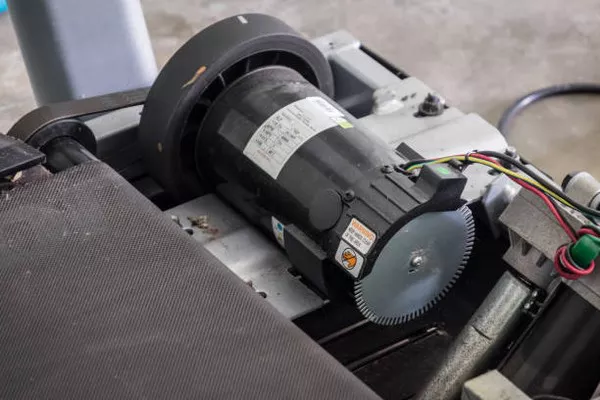Automatic Voltage Regulation (AVR) is a vital component in modern generators, ensuring the stability and reliability of electrical output. This article explores the intricate workings of AVR in generators, its importance, and the various technologies involved. Understanding how AVR operates is essential for anyone involved in generator maintenance, operation, or design.
AVR stands for Automatic Voltage Regulator. It is an electronic device designed to maintain a constant voltage level in a generator’s output, regardless of load variations. By regulating the excitation current to the alternator, the AVR plays a critical role in ensuring that the voltage remains within acceptable limits for the connected electrical devices.
The Role of AVR in Generators
Voltage Stabilization
The primary function of an AVR is to stabilize the output voltage of the generator. Fluctuations in voltage can lead to inefficiencies and damage sensitive electrical equipment. The AVR continuously monitors the generator’s output and makes real-time adjustments to maintain a steady voltage level.
Protection for Electrical Equipment
Many electrical devices, such as computers and medical equipment, require stable voltage to operate correctly. An AVR protects these devices by preventing over-voltage and under-voltage conditions that can cause malfunction or damage.
Fuel Efficiency
By optimizing the excitation current based on load requirements, the AVR enhances the overall fuel efficiency of the generator. This efficiency not only reduces operational costs but also extends the operational life of the generator.
How Does AVR Work?
Basic Principles of Operation
The AVR operates through a feedback loop that continuously monitors and adjusts the generator’s voltage output. Here’s a breakdown of how it works:
Voltage Sensing: The AVR includes voltage sensing circuits that measure the output voltage of the generator. This voltage is compared against a predefined reference value.
Error Detection: If the measured voltage deviates from the reference value, the AVR detects this as an error.
Control Action: In response to the detected error, the AVR adjusts the excitation current supplied to the generator’s rotor. An increase in excitation enhances the magnetic field, which boosts the voltage output, while a decrease has the opposite effect.
Continuous Feedback: This entire process is cyclical, allowing the AVR to make continuous adjustments in real time, ensuring stable voltage under varying load conditions.
Key Components of an AVR
An AVR system consists of several essential components:
Sensing Circuit: Detects the output voltage of the generator.
Control Circuit: Processes the voltage feedback and determines the necessary adjustments to the excitation current.
Power Stage: Amplifies the control signal to regulate the excitation provided to the rotor.
Types of AVR Systems
Electromechanical AVR: This traditional AVR uses mechanical components like relays and transformers. While effective, they are less precise and slower in response compared to modern systems.
Solid State AVR: Utilizing semiconductor technology, solid-state AVRs provide faster and more reliable voltage regulation. They are now the standard in most modern generators due to their efficiency.
Digital AVR: This advanced type employs microcontrollers and sophisticated algorithms for enhanced control over voltage regulation. Digital AVRs can adapt more effectively to changing load conditions and often come with features like data logging and communication capabilities.
Importance of AVR in Generators
Ensuring Voltage Stability
The primary role of an AVR is to maintain voltage stability. Voltage fluctuations can harm sensitive electrical equipment, leading to costly repairs and downtime. An AVR mitigates these risks by keeping the output voltage within a safe range.
Load Adaptability
AVRs help manage varying loads efficiently. In scenarios where the load changes frequently, such as in construction or events, the AVR ensures that the generator adapts accordingly, maintaining voltage quality without manual intervention.
Cost Efficiency
A well-functioning AVR contributes to the overall cost efficiency of generator operations. By optimizing the excitation current and ensuring stable voltage, the generator operates more efficiently, reducing fuel consumption and operational costs.
Prolonging Generator Life
Stable voltage output reduces stress on generator components. By preventing voltage spikes and dips, AVRs help extend the lifespan of the generator, resulting in lower maintenance costs and increased reliability.
Common Issues with AVR
Despite their advantages, AVRs can encounter issues that may affect generator performance. Here are some common problems:
Calibration Errors: Incorrect calibration can lead to inaccurate voltage regulation, resulting in unstable output.
Component Failures: Like any electronic device, AVRs can fail due to component degradation or manufacturing defects.
Environmental Influences: Extreme conditions, such as high temperatures or humidity, can impact the performance of AVRs, leading to regulation issues.
Troubleshooting AVR Issues
To ensure the reliable operation of AVRs, regular maintenance and troubleshooting are essential:
Routine Inspections: Regular checks can identify potential issues early on, preventing major failures.
Proper Calibration: Ensuring the AVR is correctly calibrated is crucial for accurate voltage regulation.
Component Replacement: Timely replacement of faulty components can restore the AVR’s functionality.
Advanced AVR Technologies
Voltage Regulation Algorithms
Modern digital AVRs use advanced algorithms to enhance voltage regulation. These algorithms allow for more precise control of the excitation system, adapting to changing load conditions faster than traditional systems.
Communication Capabilities
Many digital AVRs come equipped with communication interfaces, allowing them to connect with monitoring systems. This feature enables remote monitoring and control, facilitating proactive maintenance and troubleshooting.
Data Logging
Some AVRs can log data related to generator performance, voltage levels, and load conditions. This information is invaluable for analysis and can help identify trends or recurring issues, leading to better maintenance strategies.
Conclusion
Understanding how AVR works in generators is crucial for anyone involved in their operation and maintenance. By ensuring stable voltage output, enhancing fuel efficiency, and extending the life of the generator, AVRs are an essential component in modern power systems. Regular maintenance and awareness of potential issues can further optimize generator performance and reliability.
This comprehensive overview of AVR technology not only clarifies its workings but also highlights its significance in ensuring effective and efficient generator operation. With this knowledge, stakeholders can appreciate the complexity and necessity of AVR in today’s electrical landscape.
Related topics:

